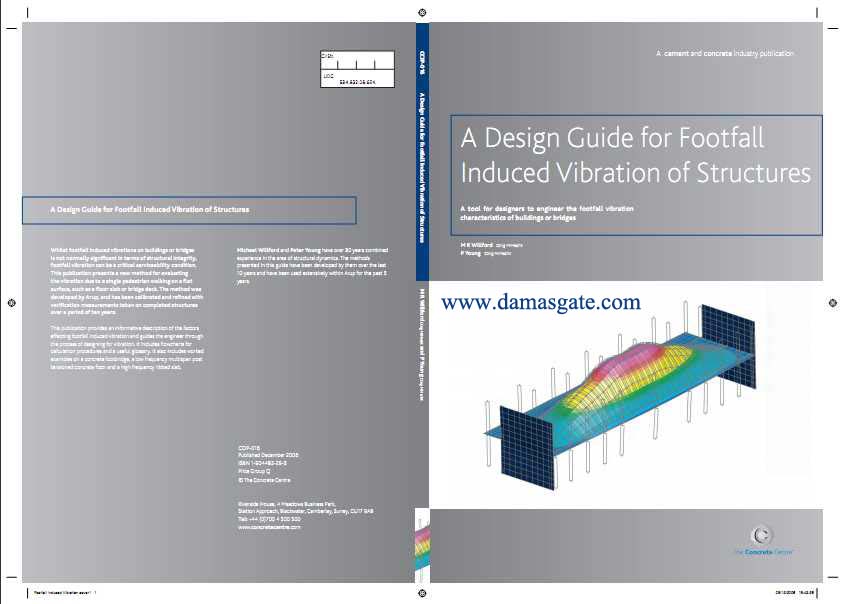A Design Guide for Footfall Induced Vibration of Structures

1. Introduction
This guide describes a reliable methodology for predicting the vertical vibration induced by pedestrians crossing structures such as floors and bridges.
Many methods already exist 1, 2, 3,4, 5 but each of these is significantly limited in some respect.
A full discussion of these limitations can be found elsewhere 6, 7.
The method presented here addresses all of the issues described below in a consistent manner:
- It is applicable to any type of structure on which people walk, including floors and bridges.
- It is applicable to structures of any form or construction material, e.g. steel, composite, reinforced or pre-stressed concrete or timber structures, and enables reliable
comparisons to be made between designs of different forms and materials.
- Complex irregular structures can be assessed as reliably as simple regular ones.
- The footfall forcing functions recommended are based on a very extensive set of measured data, and these loads and the likelihood of their occurrence have been statistically quantified.
- The methodology has been extensively validated and independently peer reviewed.
- The method has been used routinely and regularly on design projects around the world for the past five years, and its accuracy is validated by many measurements of completed structures.
- It interfaces well with modern engineering design methods and software packages.
The method described in this guide is based on the well-established principles of modal analysis. This enables first principles calculations to be made, and unlike most other methods, it does not require the introduction of arbitrary or empirical factors. This makes it a robust approach for the assessment of any type of structure of any construction material.
The method is appropriate for calculating the vibration caused by a single pedestrian walking on a flat surface on any structure which is significantly heavier (by at least a factor of 10) than the individual. Whilst very simple regular structures can be assessed entirely by hand or spreadsheet calculation, it is envisaged that the method will be used principally in conjunction with finite element analysis as a means of estimating the modal properties of floor and bridge structures. Whilst this might be seen as an added complexity, in practice the additional accuracy that finite element analysis of less regular structures brings to the assessment more than outweighs the modest additional effort associated with building and analysing a model.
The method was developed within Arup and refined by reference to the measured performance of completed structures over a period of ten years. It has been independently
reviewed by Professor T A Wyatt of Imperial College London. It is published here as a Cement and Concrete Industry publication but it is applicable to structures of any construction material.
Download
*